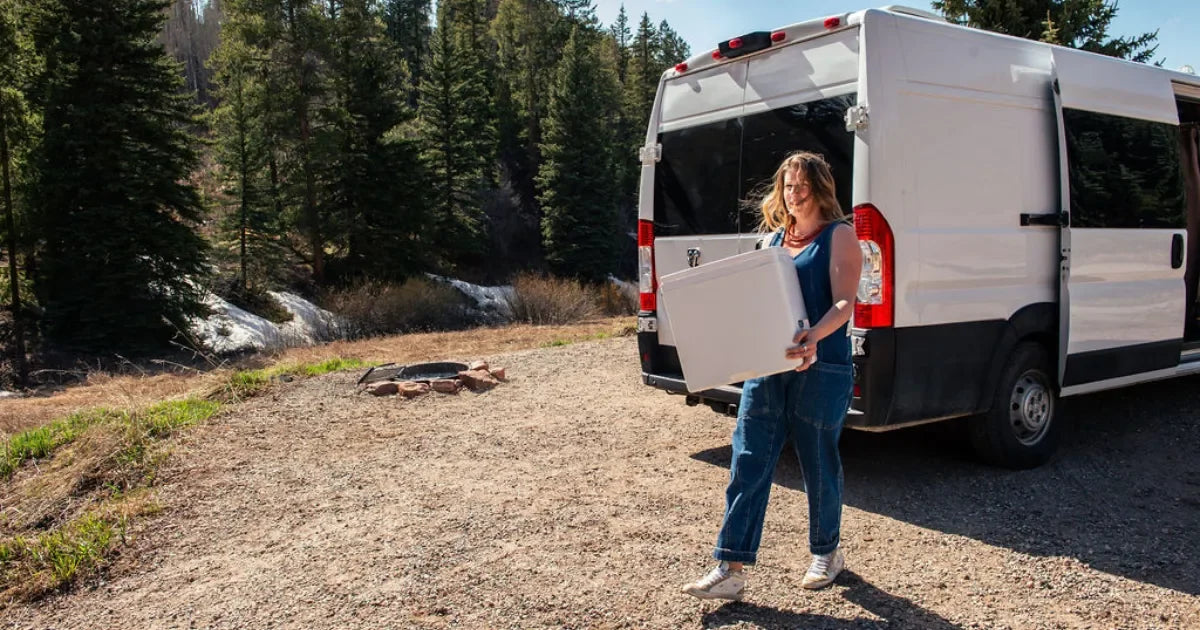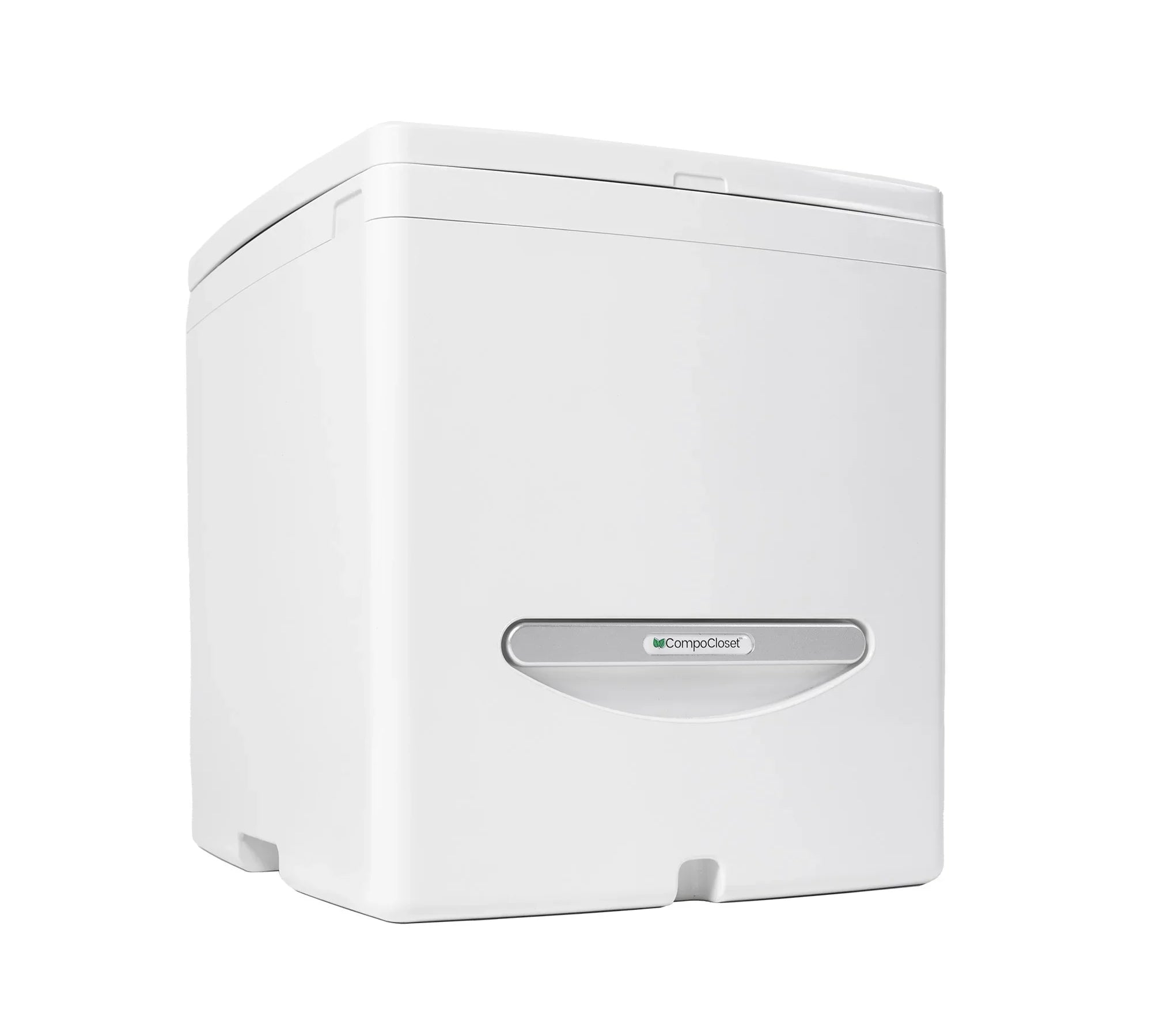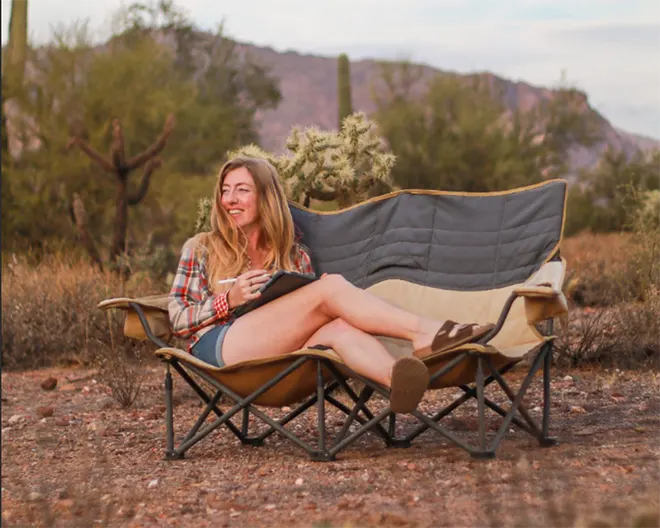If you've ever asked "what is a chemical toilet?" while planning your next vanlife adventure or camping getaway - you're not alone. Portable toilets come in all shapes, sizes, and systems these days, and it can be tricky to know which is right for you.
In this guide, we’re breaking down everything you need to know about chemical toilets: how they work, how you use them, and what it’s really like to empty one. We’ll also take a look at the pros and cons of chemical toilets compared to composting and separating sealing toilets.
Spoiler alert: there’s a reason we’re big fans of waterless, smell-free, environmentally-friendly toilets here at CompoCloset.
What is a Chemical Toilet?

A chemical toilet, or cassette toilet (we’ll explain more on that shortly) is a type of portable toilet that uses chemical additives to break down human matter, reduce odors, and sanitize the holding tank.
You’ll commonly find chemical toilets in RVs, campervans, or boats. Some people even choose to bring them along for car camping or hunting trips. They’re made up of two sections:
-
A toilet bowl and seat (sometimes with a small flush tank)
-
A sealed holding tank (or “cassette”) underneath to collect solids and liquids together
Because of this setup, chemical toilets are also often called cassette toilets. The term comes from the removable "cassette", which is the self-contained waste-holding tank that detaches from the toilet base when it's time to empty it.
Larger RVs and motorhomes often come with built-in chemical toilets that aren’t portable (they can’t be pulled out and placed elsewhere easily). These look more like traditional toilets but are plumbed into the vehicle, with matter going into a dedicated black tank (a permanent holding tank under the vehicle).
In both cases, whether portable or built-in, the toilet relies on chemical additives to manage odors and start breaking down matter.
Some people choose to replace the built-in chemical toilet in their RV with an alternative toilet type. You can learn more about that process here.
How Do You Use a Chemical Toilet

Using a built-in or portable chemical toilet is pretty straightforward:
-
Add the recommended amount of chemical solution to the cassette tank.
-
Do your business (solids and liquids go in the same tank).
-
Flush using a small water pump or manual lever (depending on the model).
-
The chemicals get to work controlling odors and partially breaking down matter.
How Do You Empty a Portable Chemical Toilet?

Here’s where things get... less glamorous.
To empty a portable chemical toilet (or cassette toilet), you’ll need to:
-
Remove the lower holding tank (the “cassette”) from the toilet base.
-
Carry it (carefully!) to a designated chemical toilet disposal point often found at campsites or RV parks.
-
Open the cassette and pour the contents into the disposal unit.
-
Rinse the tank thoroughly (usually several times).
-
Add fresh chemical solution before reassembling.
Important: Emptying a portable chemical toilet in nature, greywater drains, or anywhere other than an approved disposal site is a big no-no - the chemicals used can harm the environment.
How To Empty a Built-In Chemical Toilet

This process is even less glamorous, since you have extra hoses and steps to deal with and it typically takes longer to empty.
-
Drive your RV to a designated dump station. You can use apps like Campendium to find dump stations – keeping in mind that there is often a fee associated with using them.
-
Attach a waste hose to your RV’s black tank outlet.
-
Position the hose securely in the disposal drain.
-
Open the black tank valve and allow the contents to drain completely.
-
Flush the tank with clean water if possible.
-
Close the valve, disconnect the hose (carefully!), and store it securely.
-
Add chemical treatment to the black tank to control odors until the next emptying.
In some RVs, instead of using a black tank with a hose, the system uses a built-in cassette toilet. These cassettes are accessed from the outside of the RV and removed manually, offering a hybrid between a plumbed toilet and a portable one.
Pros of Portable Chemical Toilets
-
Relatively inexpensive upfront.
-
Compact and easy to store.
-
Familiar for first-time users.
-
Available almost everywhere camping gear is sold.
Cons of Chemical Toilets
-
Requires harsh chemicals that can be harmful to the environment.
-
Frequent emptying required (especially for multiple users).
-
Disposal can be smelly, messy, and inconvenient.
-
Holding tanks can be heavy and awkward to transport.
-
Not suitable for off-grid camping without disposal sites nearby.
-
Water required for flushing adds weight and bulk.
Why Composting & Separating Toilets Are a Better Choice

While chemical toilets might seem like the easy option, composting and separating toilets offer serious advantages - especially for long-term vanlifers, tiny home dwellers, or eco-conscious campers.
Some of the benefits of these toilets are:
-
No chemicals required — ever.
-
Solids and liquids are separated, reducing odors naturally.
-
Solids can be composted long-term or disposed of safely.
-
Liquids can often be emptied in regular greywater drains (check local rules).
-
Less frequent emptying needed.
-
Better for the environment — and your wallet in the long run.
Plus, composting toilets are designed with off-grid living in mind with no need to hunt for a chemical disposal point when it’s time to empty your toilet.
Comparing a Chemical Toilet with Other Options
Curious how different portable toilets stack up? Here’s a chart to help compare:
|
Composting Toilet w/ agitator (Cuddy) |
Separating Sealing Toilet (S1) |
Layering Composting Toilet (Cuddy Lite) |
Chemical Toilet |
Basic Bucket Toilet |
|
|
No Chemicals Required |
✔ |
✔ |
|||
|
Separates Solids & Liquids |
✔ |
✔ |
✔ |
||
|
Odor Control |
✔ |
✔ |
✔ |
✔ |
|
|
Eco-Friendly |
✔ |
✔ |
|||
|
Longer Time Between Emptying |
✔ |
||||
|
Low Upfront Cost |
✔ |
✔ |
✔ |
||
|
Easy to Use |
✔ |
✔ |
✔ |
✔ |
✔ |
|
Compact Design |
✔ |
✔ |
✔ |
✔ |
✔ |
|
Requires Chemicals |
✔ |
||||
|
Frequent Emptying |
✔ |
✔ |
✔ |
✔ |
|
|
Environmental Impact |
✔ |
Will You Choose a Chemical Toilet or Composting Toilet?
Although a chemical toilet can be portable and does the job, it comes with hidden downsides like chemical use, environmental impact, and emptying hassles.
If you're looking for a cleaner, greener, and more freedom-filled way to answer nature’s call, a composting or separating sealing toilet might just be your new best travel companion.
Here at CompoCloset, we believe doing your business shouldn’t mean compromising your values — or your adventure.






